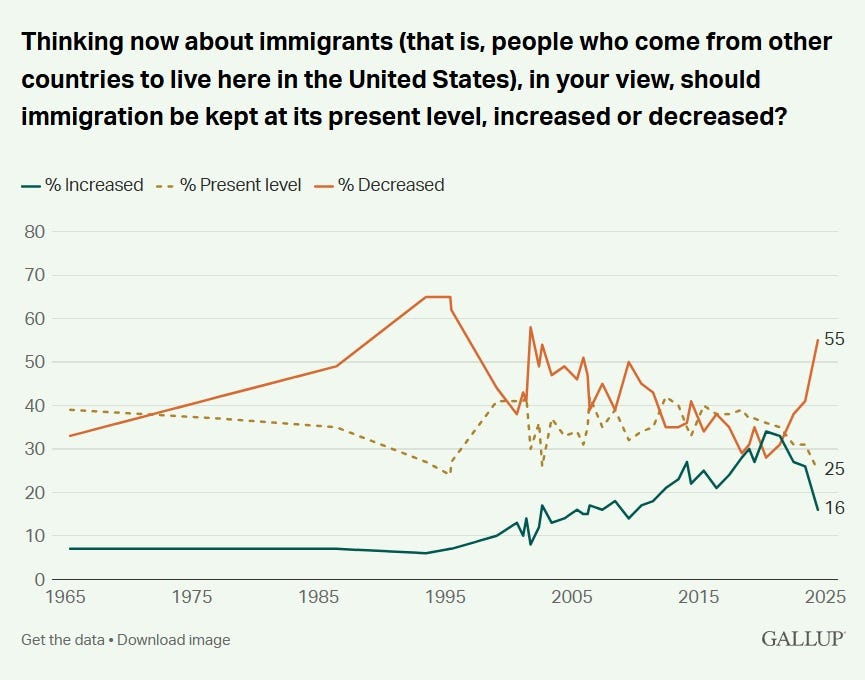Immigration is not an "invasion", nor should it be
The far right and the far left both want you to think that the purpose of immigration is to overthrow America. Don't let them get away with it.
Why is social media buzzing with photos of masked protesters waving Mexican flags over burning cars in Los Angeles? Why are there clashes between police, protesters, and ICE? Why has Trump called in the California National Guard, and why is the administration threatening to send active-duty Marines to the city? Why is California governor Gavin Newsom daring the administration to arrest him? Why are progressives on social media shouting that a fascist takeover is here?
To understand why all of this is happening and what it all means, let’s go back and think about the history of the illegal immigration issue in America over the last few decades.
When I was a kid in the 1990s, illegal immigration was a fairly straightforward matter. People from poor countries wanted to come to the U.S. to work — usually in manual labor jobs like construction, landscaping, child care, and food service. Most were from Mexico, but some were from other countries and overstayed their visas. These illegal immigrants would hide out in ethnic enclaves, keeping a low profile, while the Border Patrol and the INS (the predecessor of ICE) tried to catch them and deport them.
A lot of people were mad about illegal immigration. Conservatives were mad because they thought illegal immigrants lived off of welfare. Many labor-liberals were mad because they thought illegal immigrants took jobs from working-class Americans. There were some people who wanted to turn the issue into a culture war — Pat Buchanan types who thought American culture was being polluted, and multicultural types (the predecessors of modern “woke” progressives) who fought to replace the pejorative term “illegal immigrant” with the more euphemistic “undocumented immigrant”.1 But by and large, it was economic concerns that pushed up anti-immigration sentiment in the 1990s:

Both parties responded to this wave of economic outrage. In 1996, as part of welfare reform, Bill Clinton and a Republican Congress kicked illegal immigrants off of most forms of welfare. In 2006 George W. Bush and a Republican Congress passed the Secure Fence Act, which constructed fences along the most commonly used border crossings, thus making it much harder and more dangerous to sneak into America. Barack Obama stepped up deportations of unauthorized immigrants who committed crimes, ultimately deporting about 3 million people.
These restrictive policies, plus the Great Recession, sent illegal immigration into reverse. From 2008 through 2020, the number of unauthorized residents in America fell by well over a million (even using alternative estimates that place the total number a lot higher). Possibly as a result, anti-immigration sentiment in America fell steadily during the 2010s. It really looked like the problem was solved.
But it wasn’t. In the 2010s, a bunch of people in poor countries discovered that America’s asylum law contained a loophole — if you snuck across the border and turned yourself in to the U.S. authorities instead of hiding, you were legally entitled to an asylum hearing. Although you’d probably be denied asylum, you typically got to stay in America while waiting for your hearing — working, putting down roots, even having kids, and so on.
The shift from hiding to asylum-seeking muddied the waters of what “illegal immigration” actually meant. If you sneak across the border illegally, but the government grants you the legal right to stay in America for a while, are you an “illegal immigrant” or not? On top of that, there are other gray zones, like Temporary Protected Status, a program that the Department of Homeland Security can use to allow unauthorized immigrants to stay in the U.S. temporarily if it thinks they’d be in danger if they returned to their home countries. Then there are people who are eligible for deportation, but where a judge issues an order temporarily halting that deportation. And so on.
The old distinction between legal and illegal immigration began to break down, swamped by a dizzying array of new quasi-legal forms of immigration that average Americans almost certainly couldn’t understand.
Keep reading with a 7-day free trial
Subscribe to Noahpinion to keep reading this post and get 7 days of free access to the full post archives.


